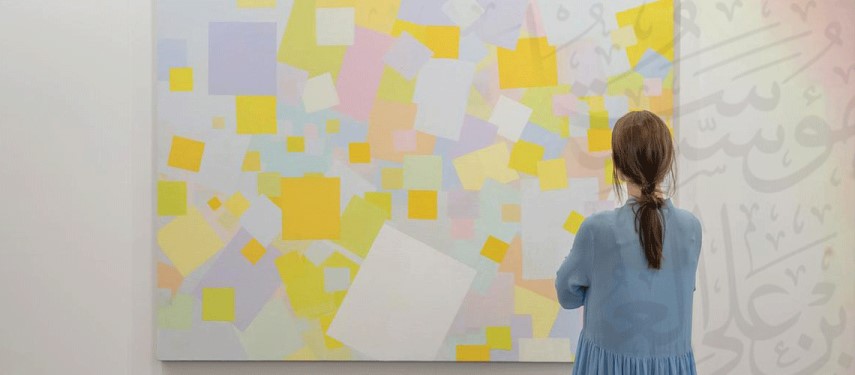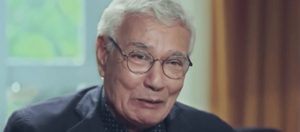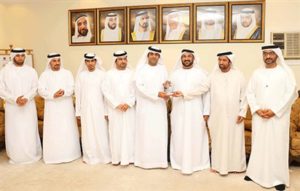Art Dubai has announced new programmes for its long-standing fair, the anchor of Dubai’s spring art season. When the event opens in March, it will be one of the first art fairs to be held in person since the coronavirus pandemic began.
Organisers are hoping that Dubai’s lower case rate – owing to the country’s restrictions on movement and having already passed through the hot summer months of largely indoor activity – will mean international gallerists, collectors and art professionals will feel comfortable coming to the UAE in the spring.
So far, the thinking has paid off: 86 galleries have signed up. And additional programming will make the fair experience as much about commerce and networking as about entertainment and exposure to new artists.
VIPs in the preview days of the fair will be taken to 35 performances, street activations and installations spread out across the city, by artists linked to Art Dubai participating galleries, including Filipino artist Kristoffer Ardena and Lebanese artist Lawrence Abu Hamdan.
“The city will become a performance ground,” says Pablo del Val, Art Dubai’s artistic director. “It will allow collectors to discover new parts of Dubai through the eyes of artists.”
While galleries will be installed at Madinat Jumeirah as in previous years, the fair is also collaborating with sites across the emirates, such as Dubai’s Jameel Arts Centre. Warehouse421, the art space in Abu Dhabi, will host an exhibition of Emirati artists on the grounds of Art Dubai. The show will demonstrate what del Val calls the depth of young artists in the UAE, as a new generation emerges from the country’s recent investment in art education.
“The country’s art scene has become a place of production as well as display,” he says.
The programmes also cap a period of change for the event. When Art Dubai started in 2007, it was one of the few international events, pre-dating art spaces such as Jameel Arts Centre and Warehouse421. Its director position (held for a long time by Antonia Carver, who del Val started alongside in 2015) has now effectively grown into a team of three: del Val, Chloe Vaitsou as international director and the new hire of Hala Khayat as regional director.
Amid these internal changes, a suite of new strands were introduced. These include a Modern section, which will be folded into the main space of the fair and curated by Sam Bardaouil and Till Fellrath, in addition to the Bawwaba section, selected by Bombay curator Nancy Adajania, which will look to art scenes in the Global South.
The coming fair, however, won’t include Residents, which hosted international artists on short-term stays in the UAE, or Gulf Now, which featured artists and collectives from the Arabian Gulf.
However, one thing seems particularly telling: as the UAE art landscape has grown more crowded, so, too, has the international fair calendar, and like all fairs, Art Dubai has had to find its USP. Now, with an increasing weighting towards non-western galleries and artists, it seems to have fully embraced its geographical position within Global South exchange.
The choice of Khayat, previously the long-time Christie’s Middle East specialist, is likewise aimed at bringing in Middle Eastern collectors, many of whom tend to be bigger buyers at auction than at fairs.
The lower price point offered at many Art Dubai galleries – which has always given the fair its endearingly raucous, upstart feel – will also fit the budget of newer or regional collectors. This will be key for next year’s event : major collectors from the US and Europe will still be unlikely to come in large numbers.
Some galleries that had left the fair, such as Sabrina Amrani from Madrid, will be returning, and new entrants include +2 from Tehran, Mono Gallery from Riyadh, Stems Gallery from Brussels and, in the Modern section, Dirimart from Istanbul, Comptoir des Mines from Marrakesh and Gallery Misr from Cairo.
Returning participants include Art Addis Fine Art from Addis Ababa and London, Gallery 1957 from Accra, Experimenter from Kolkata, Silverlens from Makati City in the Philippines, as well as Athr and Hafez from Jeddah, Sfeir-Semler from Beirut and Hamburg, and Dubai galleries such as Ayyam, Isabelle van den Eynde, Lawrie Shabibi, Meem, The Third Line and Zawyeh.
Bawwaba will focus on what Adajania calls “off-site” global art centres, with galleries coming from New Delhi and Karachi, and Cuban and Yemeni-Bosnian-American artists – a combination that would be hard to find elsewhere.
www.thenationalnews.com/




